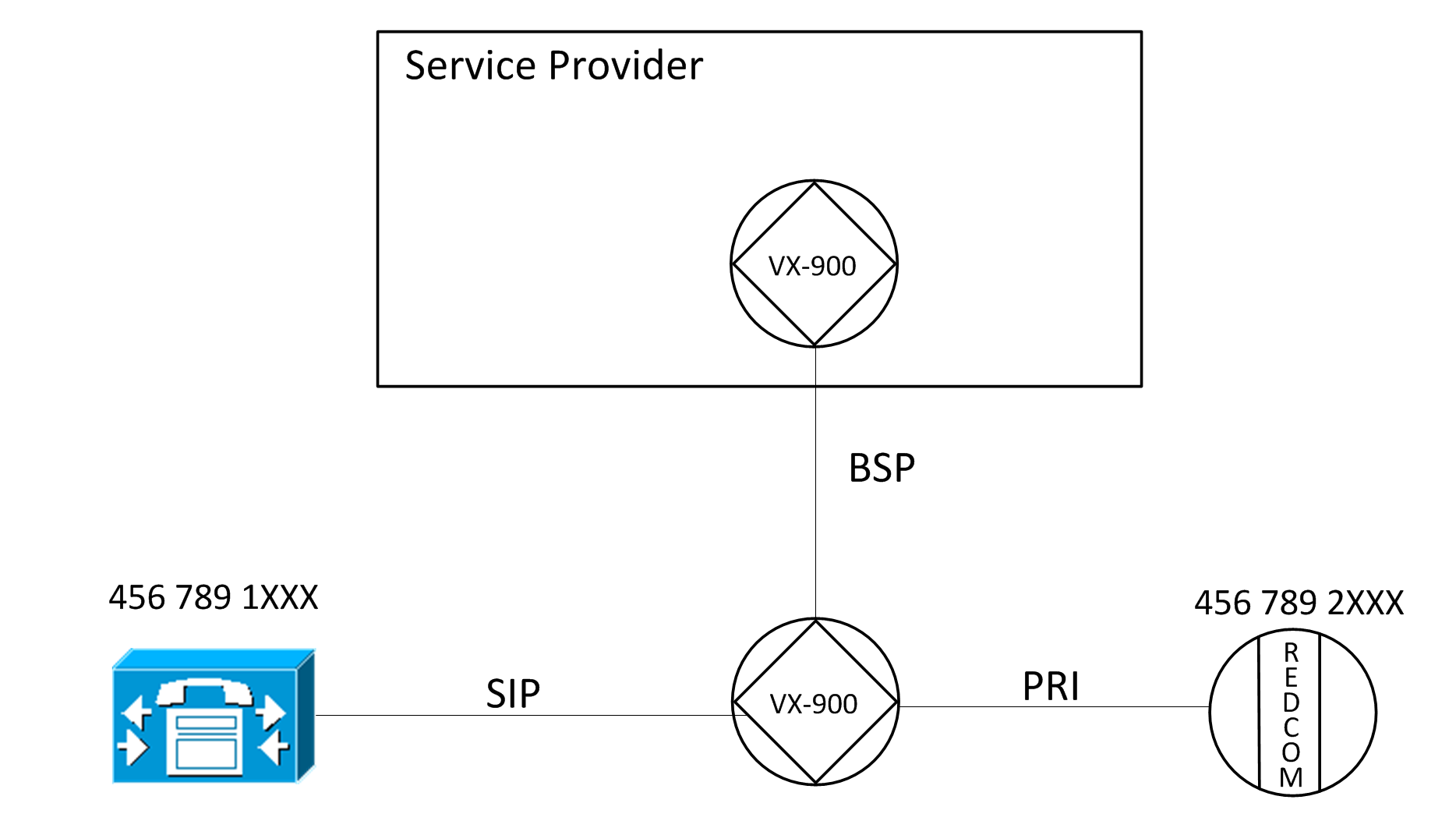SIP Trunking to the VX-900
SIP trunking to the VX-900 from a CallManager or CallManager Express (CME) is fairly straightforward*, up until the point where you try to leave your VX on a different VoIP signaling protocol, such as H.323 or BSP (Bestflow Signaling Protocol). Here is an example topology of what this might look like:
In the example above, you have a transitional voice infrastructure. You have the 456-789-1XXX number block that belongs to your VoIP phones and you have the 456-789-2XXX block that belongs to your POTS phones. Your VoIP signaling is SIP and your TDM (Time Division Multiplexing, Circuit Switching) signaling is PRI (Primary Rate Interface, T-1). From there, all voice will leave your enclave (regardless of whether it is VoIP or POTS) via BSP.
What we found was happening was the digits were being properly passed on the PRI side out the BSP (ex. Called Number = 333-456-7890), but on the SIP side the digits were passed over the BSP like this: “Called Number = 333-456-7890@192.168.1.10”. The VX-900 on the service provider side was getting the called number and did not understand the SIP formatted digits. There are several ways to accomplish stripping the SIP format, but here is what we did. Go into your VX-900. Under your “Call Routing Table”, put in the following entry (make sure this entry is below the entries for your local phone blocks):
Input: {$$$$$$$$$$}@{+}
Output: /1
How it works: The brackets {} describe blocks of numbers. The /X describes which sets of brackets you would like to pass outbound. In the example above, we wanted to pass the first block with the 10 digits (/1), but did NOT want to pass the second block with the IP address field (/2). By only outputting the first block of numbers, we effectively stripped the SIP formatting and allowed the upstream switch to understand our digits.
There are other ways to do this. I’ve seen some people send the SIP traffic through the REDCOM and back up to the VX-900 to “wash out” potential digit and CODEC issues. This is a less than preferable option because you are putting a significant limitation on your scalability. Because you are using a T-1 channel to go down to the REDCOM, and another to come back out, you will be limited to 23 phone calls if you have both T-1s active. It is also adding an additional piece of gear to the required equipment string, and an additional dial-plan to engineer. I’ve also heard about potential software updates that could simplify this, but what I have defined in this post is a scalable solution we have available to us right now.
*If you are having a problem with SIP trunking from your CallManager to a VX-900 head over to the CTC and pick up a student disc for CCMAAC (Cisco CallManager Advanced Administrator’s Course). There is a conceptual class and a step by step lab manual that covers how to do this.
